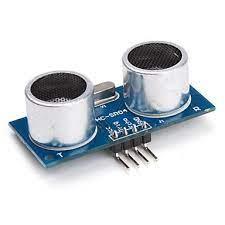The Harvester: Revolutionizing Agriculture with Precision and Efficiency
In the ever-evolving landscape of agriculture, the role of technology cannot be overstated. Among the many innovations that have transformed the industry, the harvester stands out as a symbol of precision, efficiency, and progress. From the humble beginnings of hand harvesting to the advanced machinery of today, the harvester has revolutionized the way crops are collected, ensuring higher yields, reduced labor costs, and increased sustainability.
The harvester, also known as a combine harvester or simply combine, is a versatile machine designed to efficiently harvest a variety of crops, including grains, cereals, and oilseeds. Its primary function is to perform three essential tasks in a single operation: reaping, threshing, and winnowing. This seamless integration of functions streamlines the harvesting process, significantly reducing the time and manpower required compared to traditional methods.
One of the key advantages of the harvester is its ability to adapt to different crops and field conditions. Modern harvesters come equipped with adjustable settings and attachments that allow farmers to customize the machine according to the specific requirements of their crops. Whether harvesting wheat on a vast expanse of farmland or gathering soybeans in more challenging terrain, the harvester can efficiently handle the task with precision and consistency.
The evolution of the harvester can be traced back to ancient times when early agricultural societies relied on manual labor and primitive tools to harvest their crops. The invention of the reaper in the 19th century marked a significant advancement, automating the process of cutting grain stalks and laying them out for drying. However, it was the development of the combine harvester in the late 19th and early 20th centuries that truly revolutionized agriculture.
The first self-propelled combine harvester, powered by steam, emerged in the late 1800s, dramatically increasing harvesting efficiency and productivity. Over the decades, advances in engineering and technology have further refined the design and functionality of harvesters, making them indispensable assets on modern farms.
Today's harvesters are equipped with state-of-the-art features and innovations that optimize performance and maximize yield. Advanced sensors and GPS technology enable precision farming techniques, allowing farmers to monitor crop health, soil conditions, and yield potential in real time. This data-driven approach not only enhances productivity but also promotes sustainability by minimizing resource waste and environmental impact.
In addition to their primary function of harvesting crops, modern harvesters can be outfitted with various implements and attachments to perform additional tasks, further increasing their versatility and utility on the farm. One such implement is the grain header, which is specifically designed to efficiently gather and cut standing crops such as wheat, barley, and oats. The header's adjustable height and width settings allow for seamless integration with the harvester, ensuring optimal performance across different crop varieties and field conditions.
Another essential implement commonly used with harvesters is the corn header, specially designed to harvest corn or maize. Corn headers feature rows of gathering chains and snapping rollers that efficiently strip the ears from the stalks, while augers and conveyors transport the harvested crop into the harvester for processing. The ability to quickly switch between different headers makes the harvester a versatile tool for farmers who cultivate a variety of crops on their land.
In addition to harvesting, modern combine harvesters can also perform secondary operations such as threshing and separating grain from chaff. This is achieved through the use of threshing mechanisms and cleaning systems integrated into the harvester's design. By combining multiple tasks into a single operation, harvesters help farmers save time, labor, and resources, ultimately increasing their bottom line and ensuring the sustainability of their operations.
The significance of the harvester in modern agriculture cannot be overstated. From its humble origins to its current state-of-the-art capabilities, the harvester has played a pivotal role in shaping the way crops are harvested and processed around the world. With ongoing advancements in technology and engineering, the future of harvesting holds even greater promise, as farmers continue to rely on innovative machinery to meet the growing demands of a global population.
https://khetigaadi.com/tractor-harvesters/en
In the ever-evolving landscape of agriculture, the role of technology cannot be overstated. Among the many innovations that have transformed the industry, the harvester stands out as a symbol of precision, efficiency, and progress. From the humble beginnings of hand harvesting to the advanced machinery of today, the harvester has revolutionized the way crops are collected, ensuring higher yields, reduced labor costs, and increased sustainability.
The harvester, also known as a combine harvester or simply combine, is a versatile machine designed to efficiently harvest a variety of crops, including grains, cereals, and oilseeds. Its primary function is to perform three essential tasks in a single operation: reaping, threshing, and winnowing. This seamless integration of functions streamlines the harvesting process, significantly reducing the time and manpower required compared to traditional methods.
One of the key advantages of the harvester is its ability to adapt to different crops and field conditions. Modern harvesters come equipped with adjustable settings and attachments that allow farmers to customize the machine according to the specific requirements of their crops. Whether harvesting wheat on a vast expanse of farmland or gathering soybeans in more challenging terrain, the harvester can efficiently handle the task with precision and consistency.
The evolution of the harvester can be traced back to ancient times when early agricultural societies relied on manual labor and primitive tools to harvest their crops. The invention of the reaper in the 19th century marked a significant advancement, automating the process of cutting grain stalks and laying them out for drying. However, it was the development of the combine harvester in the late 19th and early 20th centuries that truly revolutionized agriculture.
The first self-propelled combine harvester, powered by steam, emerged in the late 1800s, dramatically increasing harvesting efficiency and productivity. Over the decades, advances in engineering and technology have further refined the design and functionality of harvesters, making them indispensable assets on modern farms.
Today's harvesters are equipped with state-of-the-art features and innovations that optimize performance and maximize yield. Advanced sensors and GPS technology enable precision farming techniques, allowing farmers to monitor crop health, soil conditions, and yield potential in real time. This data-driven approach not only enhances productivity but also promotes sustainability by minimizing resource waste and environmental impact.
In addition to their primary function of harvesting crops, modern harvesters can be outfitted with various implements and attachments to perform additional tasks, further increasing their versatility and utility on the farm. One such implement is the grain header, which is specifically designed to efficiently gather and cut standing crops such as wheat, barley, and oats. The header's adjustable height and width settings allow for seamless integration with the harvester, ensuring optimal performance across different crop varieties and field conditions.
Another essential implement commonly used with harvesters is the corn header, specially designed to harvest corn or maize. Corn headers feature rows of gathering chains and snapping rollers that efficiently strip the ears from the stalks, while augers and conveyors transport the harvested crop into the harvester for processing. The ability to quickly switch between different headers makes the harvester a versatile tool for farmers who cultivate a variety of crops on their land.
In addition to harvesting, modern combine harvesters can also perform secondary operations such as threshing and separating grain from chaff. This is achieved through the use of threshing mechanisms and cleaning systems integrated into the harvester's design. By combining multiple tasks into a single operation, harvesters help farmers save time, labor, and resources, ultimately increasing their bottom line and ensuring the sustainability of their operations.
The significance of the harvester in modern agriculture cannot be overstated. From its humble origins to its current state-of-the-art capabilities, the harvester has played a pivotal role in shaping the way crops are harvested and processed around the world. With ongoing advancements in technology and engineering, the future of harvesting holds even greater promise, as farmers continue to rely on innovative machinery to meet the growing demands of a global population.
https://khetigaadi.com/tractor-harvesters/en
The Harvester: Revolutionizing Agriculture with Precision and Efficiency
In the ever-evolving landscape of agriculture, the role of technology cannot be overstated. Among the many innovations that have transformed the industry, the harvester stands out as a symbol of precision, efficiency, and progress. From the humble beginnings of hand harvesting to the advanced machinery of today, the harvester has revolutionized the way crops are collected, ensuring higher yields, reduced labor costs, and increased sustainability.
The harvester, also known as a combine harvester or simply combine, is a versatile machine designed to efficiently harvest a variety of crops, including grains, cereals, and oilseeds. Its primary function is to perform three essential tasks in a single operation: reaping, threshing, and winnowing. This seamless integration of functions streamlines the harvesting process, significantly reducing the time and manpower required compared to traditional methods.
One of the key advantages of the harvester is its ability to adapt to different crops and field conditions. Modern harvesters come equipped with adjustable settings and attachments that allow farmers to customize the machine according to the specific requirements of their crops. Whether harvesting wheat on a vast expanse of farmland or gathering soybeans in more challenging terrain, the harvester can efficiently handle the task with precision and consistency.
The evolution of the harvester can be traced back to ancient times when early agricultural societies relied on manual labor and primitive tools to harvest their crops. The invention of the reaper in the 19th century marked a significant advancement, automating the process of cutting grain stalks and laying them out for drying. However, it was the development of the combine harvester in the late 19th and early 20th centuries that truly revolutionized agriculture.
The first self-propelled combine harvester, powered by steam, emerged in the late 1800s, dramatically increasing harvesting efficiency and productivity. Over the decades, advances in engineering and technology have further refined the design and functionality of harvesters, making them indispensable assets on modern farms.
Today's harvesters are equipped with state-of-the-art features and innovations that optimize performance and maximize yield. Advanced sensors and GPS technology enable precision farming techniques, allowing farmers to monitor crop health, soil conditions, and yield potential in real time. This data-driven approach not only enhances productivity but also promotes sustainability by minimizing resource waste and environmental impact.
In addition to their primary function of harvesting crops, modern harvesters can be outfitted with various implements and attachments to perform additional tasks, further increasing their versatility and utility on the farm. One such implement is the grain header, which is specifically designed to efficiently gather and cut standing crops such as wheat, barley, and oats. The header's adjustable height and width settings allow for seamless integration with the harvester, ensuring optimal performance across different crop varieties and field conditions.
Another essential implement commonly used with harvesters is the corn header, specially designed to harvest corn or maize. Corn headers feature rows of gathering chains and snapping rollers that efficiently strip the ears from the stalks, while augers and conveyors transport the harvested crop into the harvester for processing. The ability to quickly switch between different headers makes the harvester a versatile tool for farmers who cultivate a variety of crops on their land.
In addition to harvesting, modern combine harvesters can also perform secondary operations such as threshing and separating grain from chaff. This is achieved through the use of threshing mechanisms and cleaning systems integrated into the harvester's design. By combining multiple tasks into a single operation, harvesters help farmers save time, labor, and resources, ultimately increasing their bottom line and ensuring the sustainability of their operations.
The significance of the harvester in modern agriculture cannot be overstated. From its humble origins to its current state-of-the-art capabilities, the harvester has played a pivotal role in shaping the way crops are harvested and processed around the world. With ongoing advancements in technology and engineering, the future of harvesting holds even greater promise, as farmers continue to rely on innovative machinery to meet the growing demands of a global population.
https://khetigaadi.com/tractor-harvesters/en
0 Comments
0 Shares



